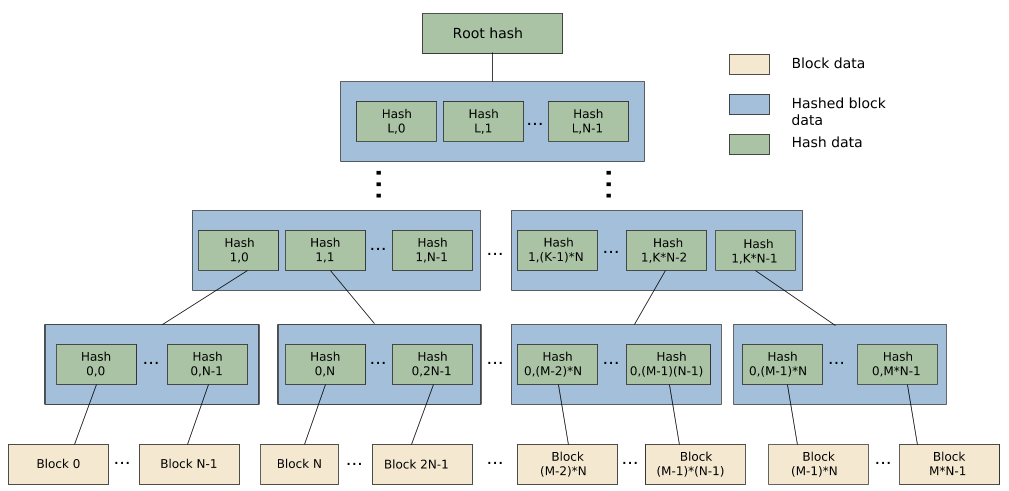QNX Trusted Disk (QTD) devices provide integrity protection of the underlying disk data in secure boot environments. They can extend the secure boot chain up to the core operating system filesystem that stores the critical binaries and configuration files.
The QTD protection mechanism is based on a Merkle tree and is supported by the fs-qtd.so shared object. It is the recommended replacement for QNX Neutrino Merkle filesystems.
When building a QTD image, a metadata hash tree is constructed from the blocks of the source filesystem image.

The QTD driver sits between the raw block device and the upper filesystem layer that is supported (for example, a Power-Safe filesystem supported by fs-qnx6.so). On read access, it uses the hash tree metadata to verify the integrity of the data before it allows it to be returned to the requester. If the verification fails, an error is returned instead. QTD disk devices are read-only.
The QTD metadata is signed and verified using a key pair. Verifying the signature ensures that the root hash of the tree is valid and hasn't been tampered with. It is the root of the trusted verification mechanism.
The size of the QTD image depends on the chosen block size as well as the chosen digest algorithm. You can use the mkqfs utility to generate statistics that describe how much additional space the metadata consumes.
QTD can also be used as a package container solution by mounting files that are themselves QTD images.
Secure hash algorithms
QTD supports the following secure hash algorithms: sha256, sha512.
Signing keys
Refer to the mkqfs utility for the supported key types and signing algorithms.
Crypto engines
OpenSSL is the only crypto engine that QTD supports.